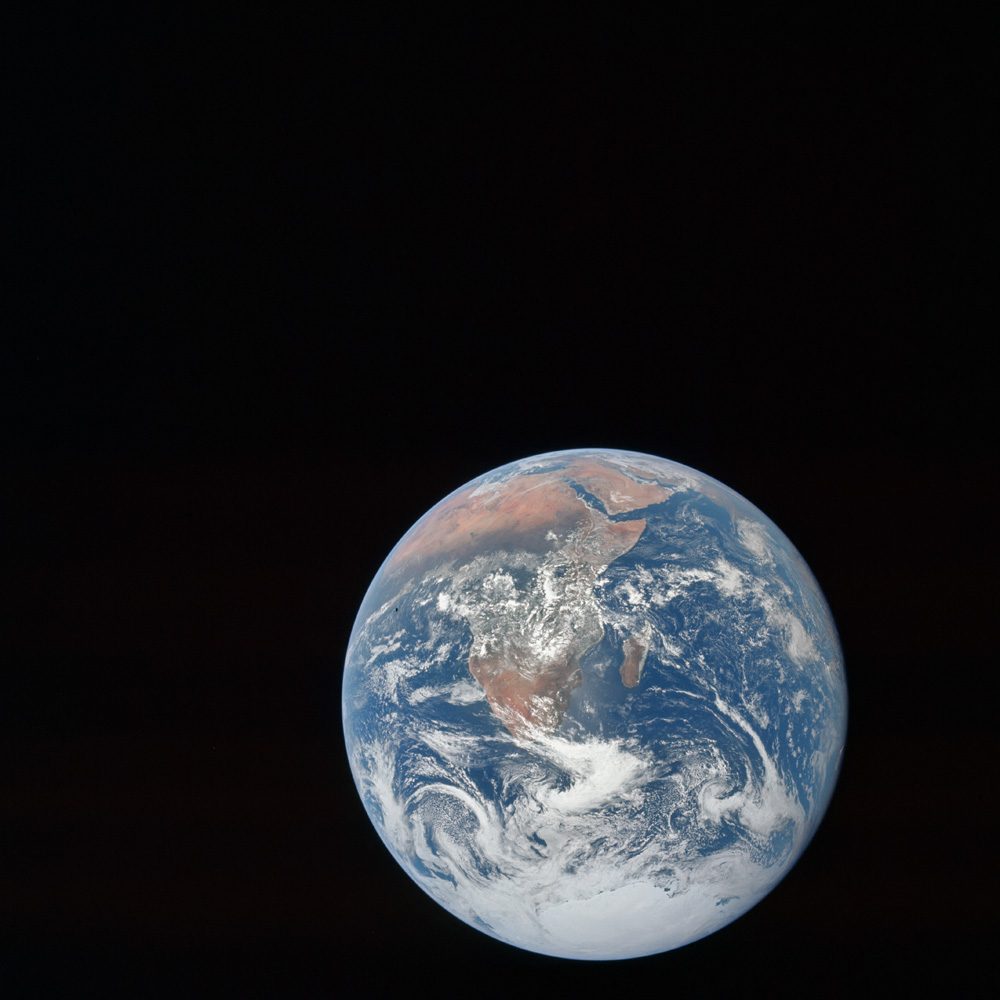I am having difficulty using the information I found in Optics Eugene Hecht to calculate how far away the 1972 Blue Marble photo (shown here) was taken. The camera used was an 80mm Hasselblad camera. The photograph was taken aboard the Apollo 17 spacecraft. It is viewed from around 28,000 km from Earth's surface.
I first started with the magnification formula where $h_i$ is the image height which seems to be around 56mm, and $h_o$ is the object height and is the diameter of Earth in milimeters.
$$M=\frac{h_{i}}{h_o}=\frac{56mm}{12,742,000,000mm} $$
$$ M=4.39\times 10^{-9}$$
For Object Distance we use: $$d_o=\frac{d_i}{M}$$
Using Thin Lens Equation: $$\frac{1}{f}=\frac{1}{d_o} +\frac{1}{d_i} $$ $$\frac{1}{80mm}=\frac{1}{(\frac{d_i}{M})} +\frac{1}{d_i} $$ $$ \frac{1}{80mm}=\frac{M}{d_i} +\frac{1}{d_i} $$ $$\frac{1}{80mm}=\frac{M+1}{d_i} $$ Solving for $d_i$ we get $$ d_i=(M+1)80 mm$$ $$d_i=(M=4.39\times 10^{-9}+1)80mm$$
$$d_i\approx 80mm$$
now to find $d_o$ we use the following:
$$d_o=\frac{d_i}{M}$$ $$d_o=\frac{80mm}{4.39\times 10^{-9}}$$ $$d_o =18,200 km$$
I am off by 10,000 km, so I am trying to understand what information I am missing or needing to get a more accurate answer. I do know the photo is cropped so I assume that may play a role. Or I am not applying the equations correctly. Any assistance is greatly appreciated.



